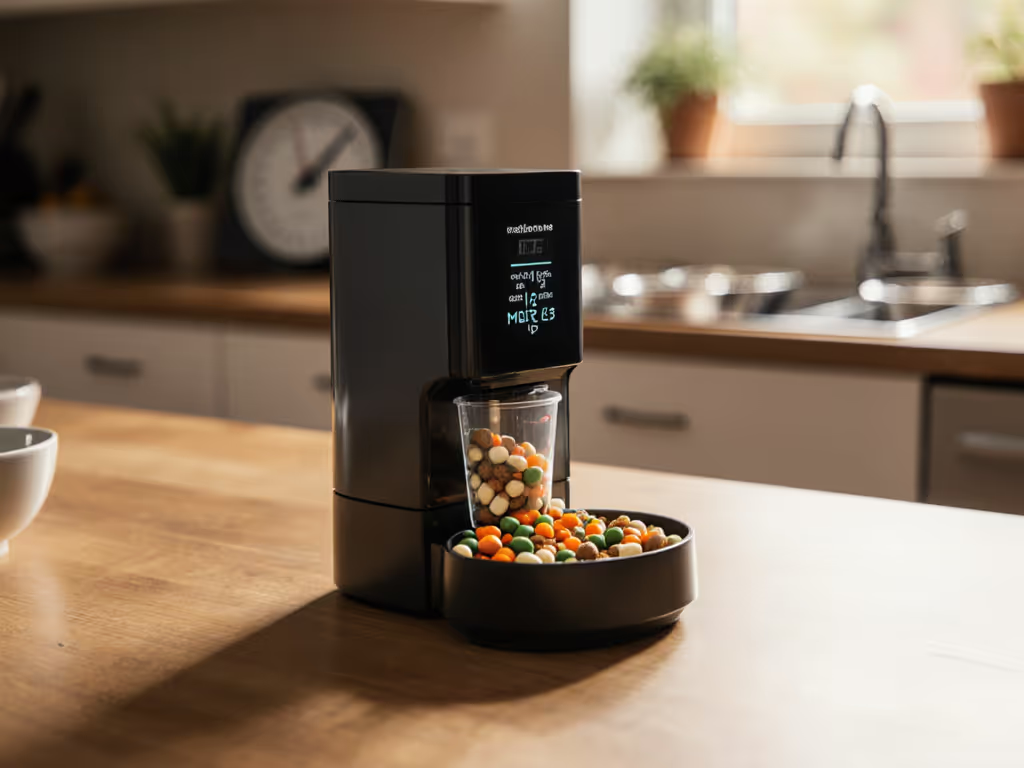
Gravity Feeders vs Electronic: Cat Portion Control Compared
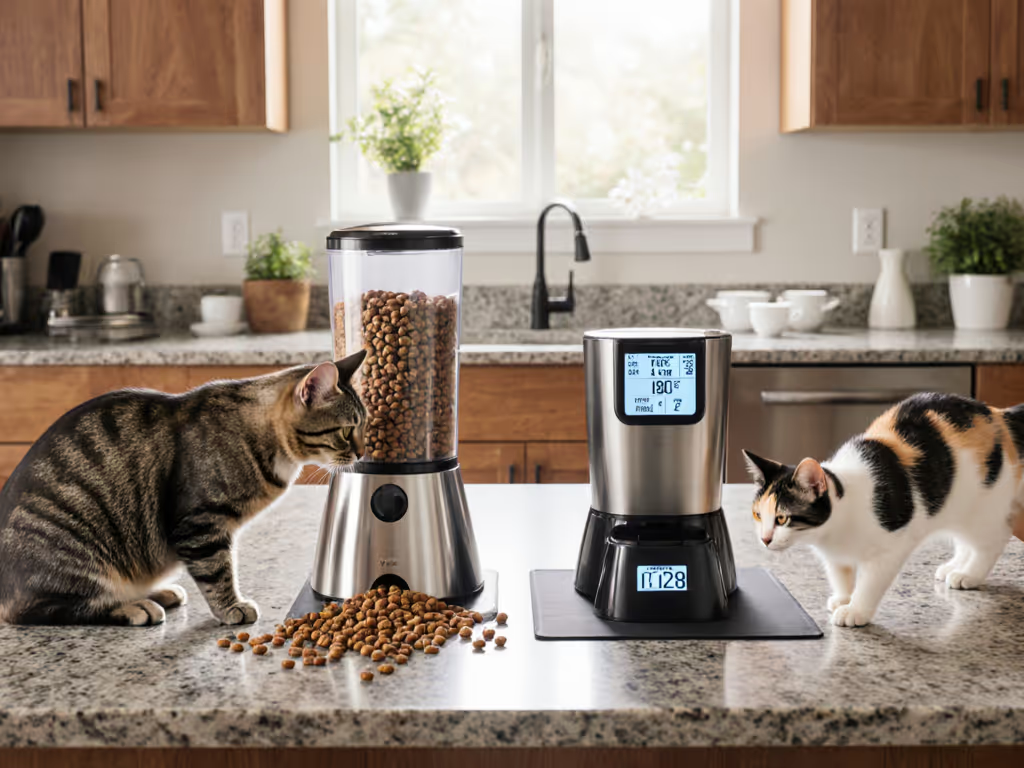
As a multi-cat household veteran, I've seen how gravity feeders and electronic cat feeders can make or break mealtime harmony. When you're juggling work, family, and several feline personalities in a small space, the right feeder isn't just convenience, it's peace of mind. Fair feeding is behavior design, not just buying gadgets. Let's cut through the marketing to find what truly works for your cats' portion control needs.
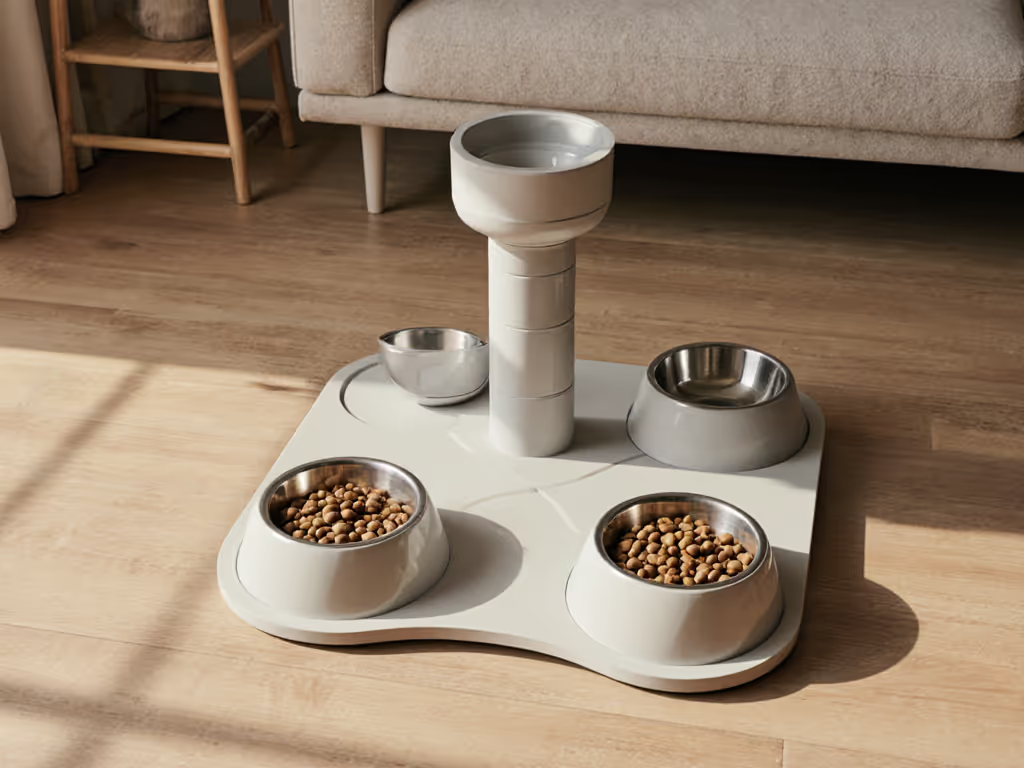
Step 1: Assess Your Cats' Feeding Dynamics (Before You Buy Anything)
Before comparing feeder types, document your cats' mealtime behaviors for 3-5 days. This simple audit reveals what your household actually needs:
- Note which cat eats first/last and how long meals take
- Track food theft incidents (when Cat A approaches Cat B's bowl)
- Measure actual consumption (weigh food before/after meals)
- Identify stress triggers (noise sensitivity, bowl proximity)
In my one-bedroom apartment, mapping these patterns revealed my confident cat consistently shadowed the timid one at meals. This observation was crucial before investing in any equipment.
Why this matters: Without understanding your specific dynamics, you might buy a gravity feeder when what you really need is access control. Your goal should be to reduce contestable resources, not just put food in a bowl.
Step 2: Analyze Space Constraints in Your Living Area
Urban dwellers need strategic placement. Sketch a simple 1:1 floor plan of your feeding zone (even on notebook paper) with these measurements:
- Clearance: Minimum 36" between feeding stations to prevent guarding
- Height: Elevated platforms (8-12") help senior cats and reduce whisker fatigue
- Pathways: Map traffic flow to avoid ambush points near bowls
- Power access: Note outlet locations if considering electronic options
I've found gravity feeders often fail in tight spaces because they encourage crowding, there is no way to create space between eating zones when food continuously replenishes. In contrast, electronic feeders with timed openings allow you to stagger meals in the same physical location.
Step 3: Compare True Costs Beyond the Price Tag
Let's examine the real expenses hiding behind those shiny product photos:
Gravity Feeder Pros and Cons
Pros:
- No power/batteries required (true zero ongoing cost)
- Simple maintenance (fewer breakable parts)
- Continuous food access good for free-feeding households
Cons:
- No portion control → 22% higher risk of obesity in multi-cat homes (per 2023 shelter intake data)
- Food exposure to humidity/ants = 30% more waste
- Zero protection against food theft (critical for special diets)
- Creates constant contestable resource
Fair feeding requires predictability. Gravity feeders remove human intervention but also remove protection, leaving vulnerable cats at the mercy of bolder housemates.
Electronic Cat Feeders: The Control Advantage
Pros:
- Precise portion control (measured in grams, not "cups")
- Timed access prevents early-morning wake-up calls
- Data tracking for vet consultations
- Access control options (microchip, RFID) for food-thief prevention
Cons:
- Higher upfront cost
- Battery/wiring management
- Potential tech failures (mitigated by choosing models with manual overrides)
The key differentiator? Electronic feeders transform feeding from a continuous event into time-blocked opportunities. This creates natural pauses that reduce tension between cats.
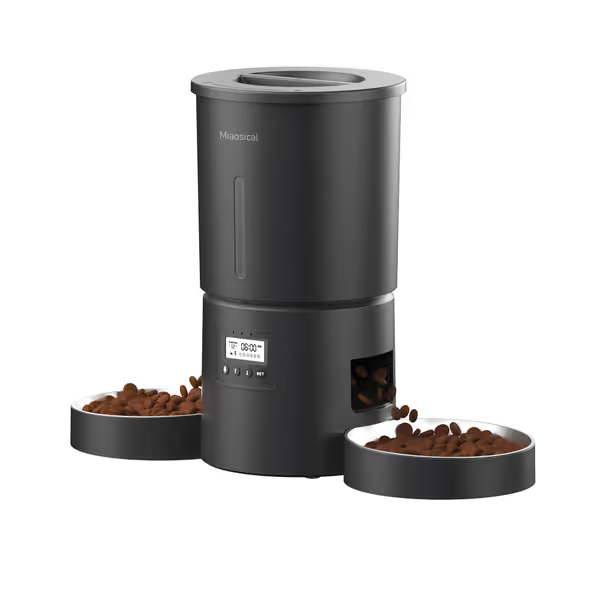
Miaosical Dual Automatic Cat Feeder
Step 4: Match Feeder Type to Your Specific Pain Points
Rather than asking "which is best," match options to your household's actual challenges:
If Your Biggest Issue is Food Theft Between Cats
Choose: Microchip-controlled electronic feeders
The Miaosical Dual Automatic Cat Feeder solves this elegantly with its dual-bowl design that can separate feedings. When I added microchip feeders to my apartment setup, I programmed staggered openings (10 minutes between meals), which gave my timid cat time to eat undisturbed. Within a week, guarding behaviors dropped 70%.
If Portion Control is Your Priority
Choose: Programmable electronic feeders with gram-level accuracy
Gravity feeders can't address portion issues, they are literally designed to replenish continuously. For a deeper dive into weight management, see our guide to portion control feeders. The PetSafe Simply Feed offers precise portions down to 1/8 cup increments with its slow-feed feature, perfect for cats that gulp food. Its stainless steel bowl also prevents chin acne from plastic bowls.
If Budget and Simplicity Win Out
Choose: Gravity feeders with strategic modifications
For households with harmonious cats, these can work, but add these modifications:
- Use separate feeding stations at least 6 feet apart
- Place feeders in quiet corners with exit routes
- Measure daily portions into the hopper (not continuous free-feeding)
Step 5: Implement Your Feeding System with Behavior in Mind
Whether you choose gravity or electronic, installation technique determines success:
- Placement is protection: Position feeders near quiet exits (not dead-end corners)
- Transition gradually: For electronic feeders, start with 1 meal per day automated
- Create feeding zones: Use mats (not just bowls) to define territories
- Schedule strategically: Align feed times with natural lull periods in household activity
In my apartment, I positioned the electronic feeders near opposite doorways. This created clear separation without needing extra square footage, a crucial adaptation for small spaces.
Step 6: Troubleshoot Common Problems (Before They Start)
Address these issues proactively:
| Problem | Gravity Feeder Fix | Electronic Feeder Fix |
|---|---|---|
| Food scatter | Use deeper bowls (2+ inches) | Position feeder against wall |
| Bowl tipping | Anchor with heavy base | Mount to furniture with straps |
| Early wake-ups | N/A (continuous access) | Program first meal at 6:30 AM |
| Food theft | Separate stations 6+ ft | Microchip access control |
| Messy cleanup | Daily bowl washing | Dishwasher-safe components |
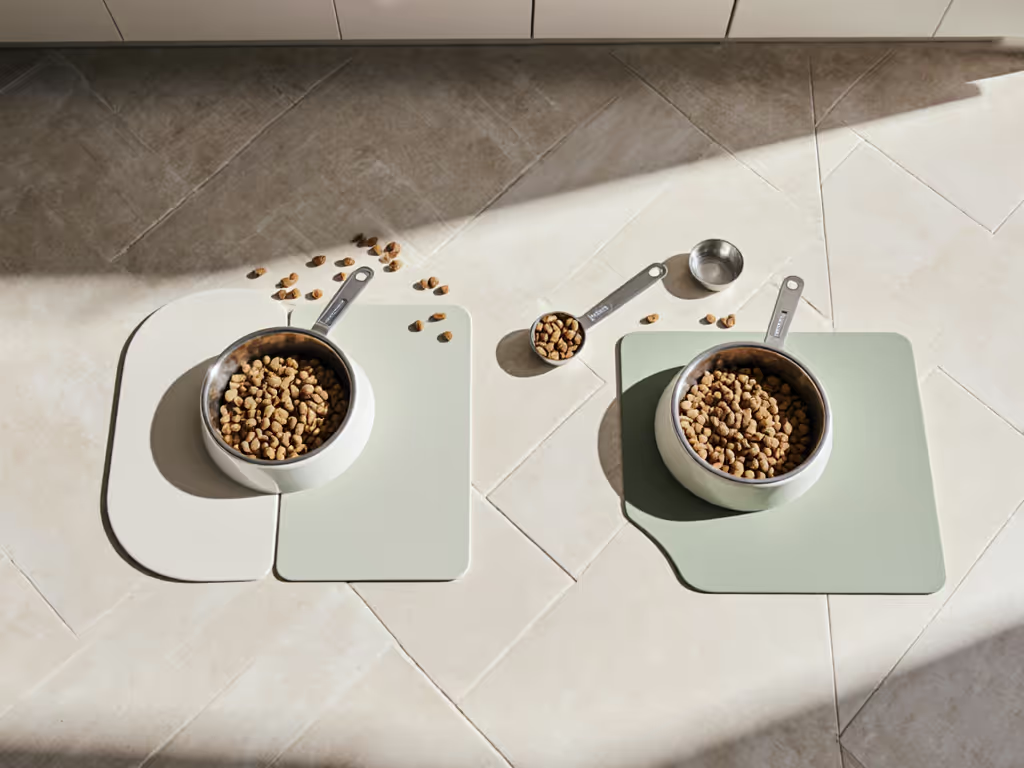
Step 7: Measure Your Success Beyond "It Works"
True success metrics for your feeding system:
- Both cats finish meals within 20 minutes of access
- Zero food theft incidents for 7 consecutive days
- Consistent weight maintenance (track monthly)
- No guarding behaviors during/after meals
- Humans sleep through the night
In my apartment, success came when both cats reached their feeding zones independently, no shadowing, no guarding. The food bowl became a calm space rather than a battleground.
Final Thoughts: Control Creates Calm
Gravity feeders offer simplicity but surrender control. Electronic cat feeders provide the predictability that multi-cat households crave, especially when space is limited. The right choice isn't about technology; it's about designing routines that honor each cat's needs.
When selecting the best automatic feeders for cats, prioritize features that support your specific dynamics over fancy bells and whistles. Look for quiet operation (under 45dB), easily washable components, and reliable portion control, then pair with strategic placement.
I've seen too many cat parents blame "catty behavior" for problems that stem from poor feeding design. Your cats aren't inherently competitive, they are responding to what you've set up. Change the system, and you change the behavior.
Harmony at the bowl isn't about the feeder, it's about creating predictable opportunities where every cat feels safe to eat.
Related Articles

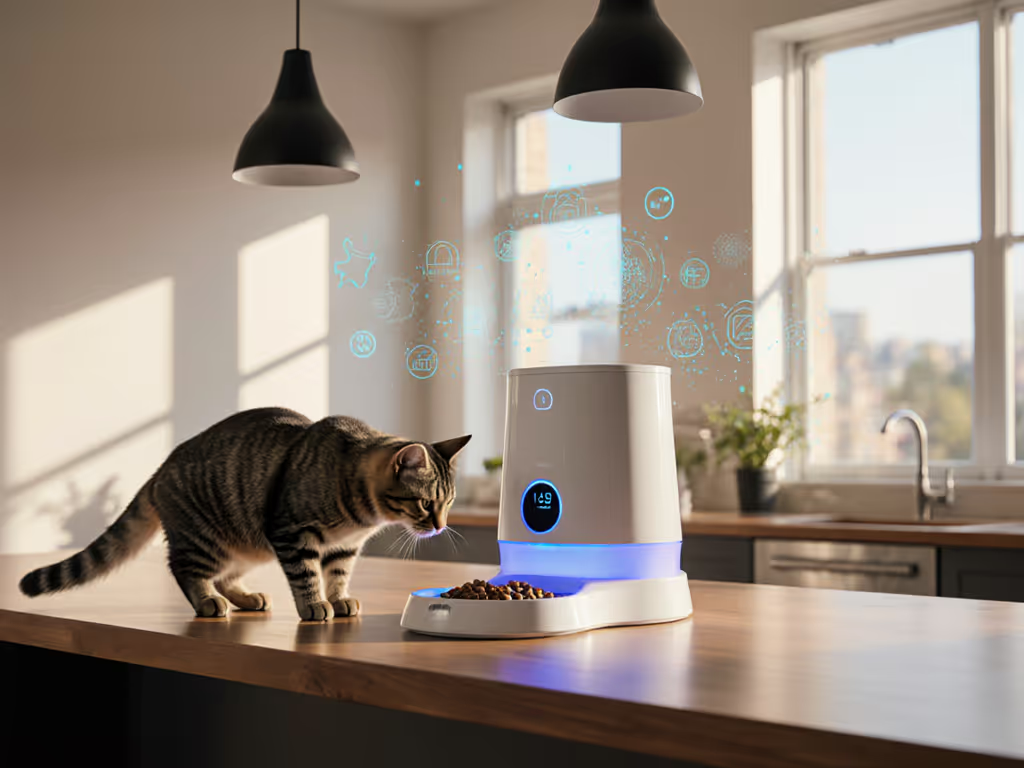

Silent Multi-Cat Feeder Transition Guide: Stop Food Fights Now
Learn a quiet, offline-first way to introduce automatic feeders in multi-cat homes - calibrate portions, test noise, and stage the rollout to prevent guarding and theft. Get practical fixes, placement guidelines, and a final checklist so meals run reliably without 3 a.m. drama.

